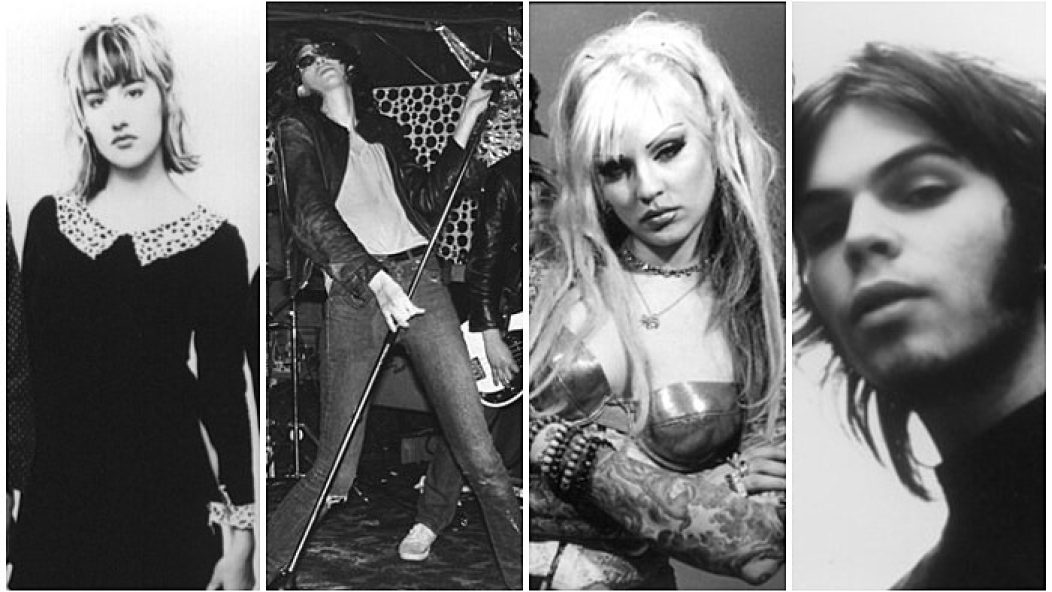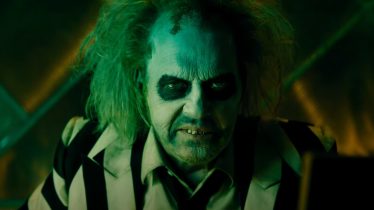
15 albums from 1995 that are a perfect gateway into the world of punk
In 1996, Your Punk Professor interviewed the Clash’s distinguished lead guitarist Mick Jones for a proposed Alternative Press piece on punk’s original guitar heroes. Though it remains unpublished, I asked in the course of it what he thought of Rancid. Jones waxed effusive, noting he’d met the Berkeley punk traditionalists in the course of a U.S. Big Audio Dynamite tour, impressed with how hands-on and DIY they were in the running of the band, down to storyboarding their own videos.
I smirked. “You’re being considerably generous, considering many cynics think Rancid should be named to Give ‘Em Enough Rope: A Tribute To The Clash,” I quipped.
Read more: These 15 punk albums of 1990 set the tone for the decade
“It doesn’t matter when you get into this music,” Jones answered in his soft Cockney accent. “What matters is that you get into it.”
1995 would’ve made a solid gateway year for any budding mid-’90s punk, even without commercial monoliths such as Insomniac or …And Out Come The Wolves. There was a wave of U.K. bands gleaning inspiration from their homeland’s most art-pop-damaged late ‘70s outfits, such as Buzzcocks or Wire, shot through with a dose of Clashian power—Elastica, These Animal Men, Supergrass. There was rawer, garage-ier fare courtesy of Oblivians and Rocket From The Crypt, garage-grunge from Mudhoney, some killer pogo-pop from the Muffs and Lunachicks acting like a feminist Motörhead. Then there was the ‘77-in-’95 bunch, the Stitches and U.S. Bombs, and the grand old men of punk traditionalism the Lazy Cowgirls, back after a five-year absence. Sadly, the Ramones ended their career with their strongest album in years.
Read more: 15 punk albums from 1993 that embraced contrarianism over prefab rebellion
It was as perfect a time as 1977 or 1981 to get into punk. The streets rang with some of the best assault rock of the ages. Hence, it’s our pleasure to present Alternative Press’ 15 best punk albums of 1995.
Elastica – Elastica
When their 1993 debut single “Stutter”—a 2:22 sneer at erectile dysfunction set to four very Buzzcocks-ish chords—dropped, it seemed like the vanguard of a group of ‘70s Britpunk throwback bands the U.K. rock press dubbed the New Wave Of New Wave. By the time America heard it two years later on Elastica’s self-titled debut album, the band seemed the punkiest of the newly emergent Britpop scene. The misconception was aided by leader Justine Frischmann’s early membership in Suede, plus rebounding from a romance with that band’s Brett Anderson by falling into the arms of Blur’s Damon Albarn. But this wasn’t some cheeky Cockney reinvigoration of the Ray Davies songbook. Frischmann set her dispassionate ongoing critique of heterosexual sex—plus a love of fast cars, getting sloshed on wine and strung out on coffee and nicotine—to repurposed Wire and Stranglers riffs. (In fact, she had to settle out of court with both bands for plagiarism.) Adding a certain Ramones/Blondie energy, a revitalization of the band-as-a-gang concept, and Frischmann’s very ADHD song constructions (“I have a low boredom threshold,” she told The Guardian in 2002. “I want the best bits—verse-chorus, verse-chorus. That’s it.”) created the pithiest, most exciting rock ‘n’ roll album of the year. It’s unfortunate the band were too fragile to sustain the momentum. They became bonafide stars in America once the striking “Connection” video gained MTV saturation-play. It took another five years to issue follow-up album The Menace. Then they were gone.
Rancid – …And Out Come The Wolves
1994’s Let’s Go changed Rancid’s lives forever. They got swept into the Green Day-led punk-pop radio-and-MTV invasion with semi-hit “Salvation.” Odd, considering their mohawks-and-leather style and being 1977 pogo-rock die-hards. Suddenly, every major label in God’s green universe chased the Berkeleyites down the street waving checkbooks. The band claimed in an Alternative Press cover story that Madonna sent them a nude Polaroid as an attempted enticement to sign with her Maverick Records imprint. The bidding war inspired their third LP’s title, derived from a line in Jim Carroll’s The Basketball Diaries. (The gutter poet-cum-punk musician also co-wrote and appeared on the record’s “Junkie Man.”) In the long run, Rancid (perhaps not so politely) turned down all suitors, remaining with Epitaph. It’s likely a factor in their retaining much of their original fanbase, alongside steadfastly adhering to an early Clash sound, seasoned with ska strains leftover from Tim Armstrong and Matt Freeman’s first band, Operation Ivy. But then they built upon that core audience with a string of catchy singles—self-mythologizing rockers such as “Ruby Soho” (remade in a skinhead reggae arrangement by Jamaican roots legend Jimmy Cliff on his 2012, Armstrong-produced Rebirth album), “Roots Radical” and the ska-infused “Time Bomb.” Producer Jerry Finn pushed Armstrong’s sore-throat vocals up front and added plenty of radio-friendly midrange sparkle to Lars Frederiksen’s thick power chords. But pride of place was rightfully given to Freeman’s fleet-fingered bass lines—he could be punk’s Jaco Pastorius. The careful music-making paid off: …And Out Come The Wolves peaked at No. 45 on the Billboard 200, became certified gold Jan. 22, 1996 and then went platinum Sept. 23, 2004. It may be Rancid’s best, most definitive album.
These Animal Men – (Come On, Join) The High Society
The New Wave Of New Wave’s 1993 arrival, primarily via the pages of NME, was exciting and promising. Who doesn’t love malnourished young men and women leaping around in narrow trousers, tight T-shirts, skinny ties, short messy hair and gobs of eyeliner, Telecasters around their necks, playing tightly wound approximations of the early Clash catalog? Brighton’s These Animal Men’s emergence felt particularly auspicious. Their jacked-up mod-punk debut LP brimmed with delightfully trashy tin-can Jam/Buzzcocks riffs shot through with a dose of Mott The Hoople anthemicism. That they boasted a 10-point manifesto designed to net “Shock! Horror!” tabloid headlines (“No. 7: Love is good, but not as good as a wank”) and leader Hooligan was a hilariously arrogant quote machine (“Can a band unite like the Smiths? Maybe not, but it’s fucking well worth trying”) helped. In another dimension, they’d have been Oasis.
Green Day – Insomniac
“I really wanted to make a record that was darker and harder,” Billie Joe Armstrong told Alternative Press last year, re: “Dookie’s gnarlier little brother Insomniac.” Selling 3 million albums in 1994 and netting a Best Alternative Music Performance Grammy caused many at Gilman Street to scream “SELL OUT!” as Green Day’s new tour bus drove by on the way to their next stadium date. So, Armstrong, Tré Cool, and Mike Dirnt got ugly. Rob Cavallo gave the fourth Green Day studio album a production as dry and abrasive as Nirvana’s In Utero, with Armstrong’s guitar less sparkly and more distorted. Material such as lead single “Geek Stink Breath,” about meth abuse and its attendant physical toll, was nastier than “Longview.” It still sold over 2 million records, which only seems paltry next to Dookie’s 20 million.
Rocket From The Crypt – Scream, Dracula, Scream!
The ambitious, prolific San Diego soul-a-billy punk outfit led by singer/guitarist John “Speedo” Reis had signed with Interscope Records in 1992, on the back of adjunct band Drive Like Jehu. Having negotiated a clause in their contract allowing Rocket From The Crypt to issue vinyl on other indie labels, it took three years and indie EP The State Of Art Is On Fire and LP Hot Charity to get around to their Interscope debut. Their ambition increased exponentially with the infusion of major-label cash, with more horns and even strings added to Scream, lending it the most epic production they’d enjoyed. Three singles of their rhythmic, guitar-heavy anthems—“Born In ‘69,” “On A Rope,” and “Young Livers”—got ‘em saturation MTV play and a Top Of The Pops slot in England. They even convinced Interscope to underwrite a free tour. If this was a great rock ‘n’ roll swindle, then RFTC were swindlers with style.
Ramones – ¡Adios Amigos!
The 14th studio LP from punk’s definitive band was preceded by an announcement: It would be their last. The Ramones felt increasingly out of time, now in their 50s (save for 20-something bassist C.J. Ramone, Dee Dee’s replacement) and seeing bands such as Green Day becoming the mega act they always wanted to be, on the back of Johnny/Joey/Dee Dee/Tommy’s innovations. The frustration created the best Ramones album since 1984’s Too Tough To Die. Dee Dee penned six of ¡Adios Amigos!’s 13 tracks, most of which were sung by C.J. Elsewhere, album-opening Tom Waits cover “I Don’t Want To Grow Up” sounded custom written for the Forest Hills foursome, while the rendition of Johnny Thunders’ “I Love You” sounded like the Heartbreakers on steroids. Johnny Ramone’s Mosrite never roared so articulately, and Joey was in fine voice. One year-long tour later, which saw them opening for Pearl Jam one leg, then joining the summer’s Lollapalooza trek for a chunk, the Ramones bade the world farewell at the Hollywood Palace, Aug. 6, 1996. Every band who calls themselves punk rock owes those four men, big time.
Fugazi – Red Medicine
The D.C. post-hardcore heroes’ fourth LP opened with a jarring extended blast of dissonant clang that resembled Einsturzende Neubauten caught in the gears of a meat grinder before erupting into the (slightly) more conventional ”Do You Like Me.” This served notice that the never-ordinary Fugazi would be taking even more chances on Red Medicine. Continuing to work with engineer Don Zientara, Ted Niceley was relieved of production duties, the band wishing to go the opposite direction from In On The Kill Taker’s more aggressive sonic approach. Not to imply there wasn’t plenty of blasting fury—witness “Bed For The Scraping” or the crashing post-punk guitars of “Latest Disgrace.” If Fugazi had any manifesto, it was to never be predictable.
The Muffs – Blonder And Blonder
For their superb second LP, Southern California’s garage-infested punk-pop royalty were trimmed down to a rockin’ trio. Founding guitarist Melanie Vammen left following the tour supporting their 1993 debut album, and ex-Redd Kross drummer Roy McDonald eventually took over following Criss Crass and Jim Laspesa’s stints manning the sticks. With Vammen’s wall-of-filth fuzzbox gone, the Muffs fully centered around leader Kim Shattuck’s ringing guitar and British Invasion-inspired compositions, as bassist Ronnie Barnett’s harmonies locked in with Shattuck’s sweet but bratty snarl. Blonder And Blonder featured some of Shattuck’s most deathless tunes, especially “Oh Nina” and “Laying On A Bed Of Roses.”
Lazy Cowgirls – Ragged Soul
It’d been five years since the last Lazy Cowgirls long-player, How It Looks – How It Is. Lead howler Pat Todd and vicious downstroker Doug “D.D. Weekday” Phillips had parted company with bassist Keith Telligman and drummer Allen Clark; it took a while to replace them with ex-Creamers four-stringer Leonard Keringer and snare-smasher Ed Huerta. With Weekday’s Johnny Ramone-meets-Johnny Thunders guitar snarling augmented by second Gibson wizard Michael Leigh, the Cowgirls took 14 of the best songs they’d written since 1990 to ex-Sparks guitarist Earle Mankey, producer of prestige acts ranging from the Runaways to Concrete Blonde. Mankey got the strongest, cleanest recorded performances of their career, bolstering an already strong set of tunes such as “I Can’t Be Satisfied” and “Never Got The Chance.” If 1987’s magnificent Tapping The Source wasn’t reason to believe the Lazy Cowgirls were the last real punk band, then Ragged Soul was.
Oblivians – Soul Food
Memphis’ Oblivians were the ultimate distillation of a long-standing local punk tradition, going back to the Klitz and Tav Falco’s Panther Burns in the late ‘70s: Get loaded on cheap wine and pills pilfered from mama’s medicine chest, grab cheap equipment and blast with barely any instrumental competence and all the manic energy of a scratchy Jerry Lee Lewis Sun 45. By the time of 1995 Crypt Records debut LP Soul Food, the trio of Eric, Greg and Jack Oblivian had made a virtue of crap-fi production and way too much fuzz. But for all the sleazy danger of tracks such as Stooge-oid opener “Viet Nam War Blues” or “No Reason To Live,” there laid some primitive songwriting genius beneath the layers of sonic grime.
Supergrass – I Should Coco
True, when debut album I Should Coco dropped on the very same Parlophone label that’d hosted the Beatles in the ‘60s, Supergrass seemed very much in the vanguard of Britpop. Yet, the Oxford trio of singer/guitarist Gaz Coombes, bassist Mick Quinn and drummer Danny Goffey debuted the year before with steaming punk-rock single “Caught By The Fuzz,” which resembled a stoner version of the Buzzcocks. However, even their chirpy mashups of the Kinks and Small Faces such as “Mansize Rooster” or “Alright” are shot through with all the propulsive punk drive and utra-British songwriting intelligence of, say, the Jam.
Mudhoney – My Brother The Cow
Though grunge’s definitive band, Mudhoney always ran the most garage-punk of Seattle’s Superfuzz’ed and Big Muff’ed bands. For fourth studio album My Brother The Cow, they resumed working with Jack Endino, who’d produced such early Mudhoney hallmarks as grunge opening shot “Touch Me I’m Sick.” Singer/guitarist Mark Arm, guitarist Steve Turner, bassist Matt Lukin and drummer Dan Peters got expansive with all that Reprise Records money—Peters pummeled a marimba atop opener “Judgement, Rage, Retribution And Thyme,” while sax and harmonica slithered in elsewhere. Meanwhile, Courtney Love thought “Into Yer Shtik” was about her, and not flatteringly. She complained to Warner Records CEO Danny Goldberg, former head of Gold Mountain, the firm that managed both Nirvana and Hole. He in turn called Mudhoney’s A&R man David Katznelson during a marketing meeting for Cow on Arm’s 33rd birthday, about one month prior to the album’s release. All was smoothed in the end. Goldberg hopefully listened to Cow eventually. It rocks like 400 lbs. of gravel.
Lunachicks – Jerk Of All Trades
With drum dynamo Chip English now firmly ensconced at the kit, New York’s feminist trash-punk heroines Lunachicks hardened into a relentless punk-metal assault unit, as if the Plasmatics had good songs. Theo Kogan’s alto croon certainly hits the ears better than Wendy O. Williams’ one-note rasp. Producer Ray Martin got a well-manicured roar out of the Lunachicks, with Gina Volpe slinging some sizzling leads atop Sindi Benezra’s thick chords and Squid’s 300 lb. bass. Some fine insults fly on “Drop Dead” and “F.D.S.,” while “Edgar” resembles a Misfits tribute minus the horror movie seasoning. Jerk Of All Trades may not be Lunachicks’ masterpiece, but it comes damned close.
The Stitches – 8×12
Orange County trad-punks the Stitches have been a four-man force for the return of 1977 values since 1993. 8×12 was the first long-playing evidence of their high-speed fury. Such 100 MPH blitzbombs as “Throw It Away” and “My Baby Hates Me” screamed like late ‘70s U.K. pogo-rock second-stringers like the Lurkers or Slaughter And The Dogs played at 78 RPM. They were the aural equivalent of their notoriously chaotic live sets, where lead bawler Mike Lohrman got tangled in the mic cables and Johnny Witmer hurled his Gibson at his amps in disgust. And that was just the set’s first number. Socially irresponsible snot-rock never sounded so vital and catchy.
U.S. Bombs – Put Strength In The Final Blow
Skate legend Duane Peters had enough of grunge and bogus alt-rock. He wanted a classic old-school punk band a la the Clash or Sham 69. He teamed up with ex-Shattered Faith guitarist Kerry Martinez and found what he needed in U.S. Bombs. On their debut album, Peters’ bawled out his very Johnny Rotten vocals atop Martinez’s girthy Les Paul chords and the O.C. pogo-stompers’ original rhythm section of Steve Reynolds (bass) and Benny Rapp III (drums). But it wouldn’t have worked without gritty, anthemic songs such as “Dime Runner” or “Mob Family.” Live, Peters was Charles Bukowski’s idea of a punk frontman—tattooed head to toe, loaded on various substances, snarling frequently into two mics. Sadly long out of print, Put Strength In The Final Blow was a solid debut, the beginning of a beautifully snotty legend.










